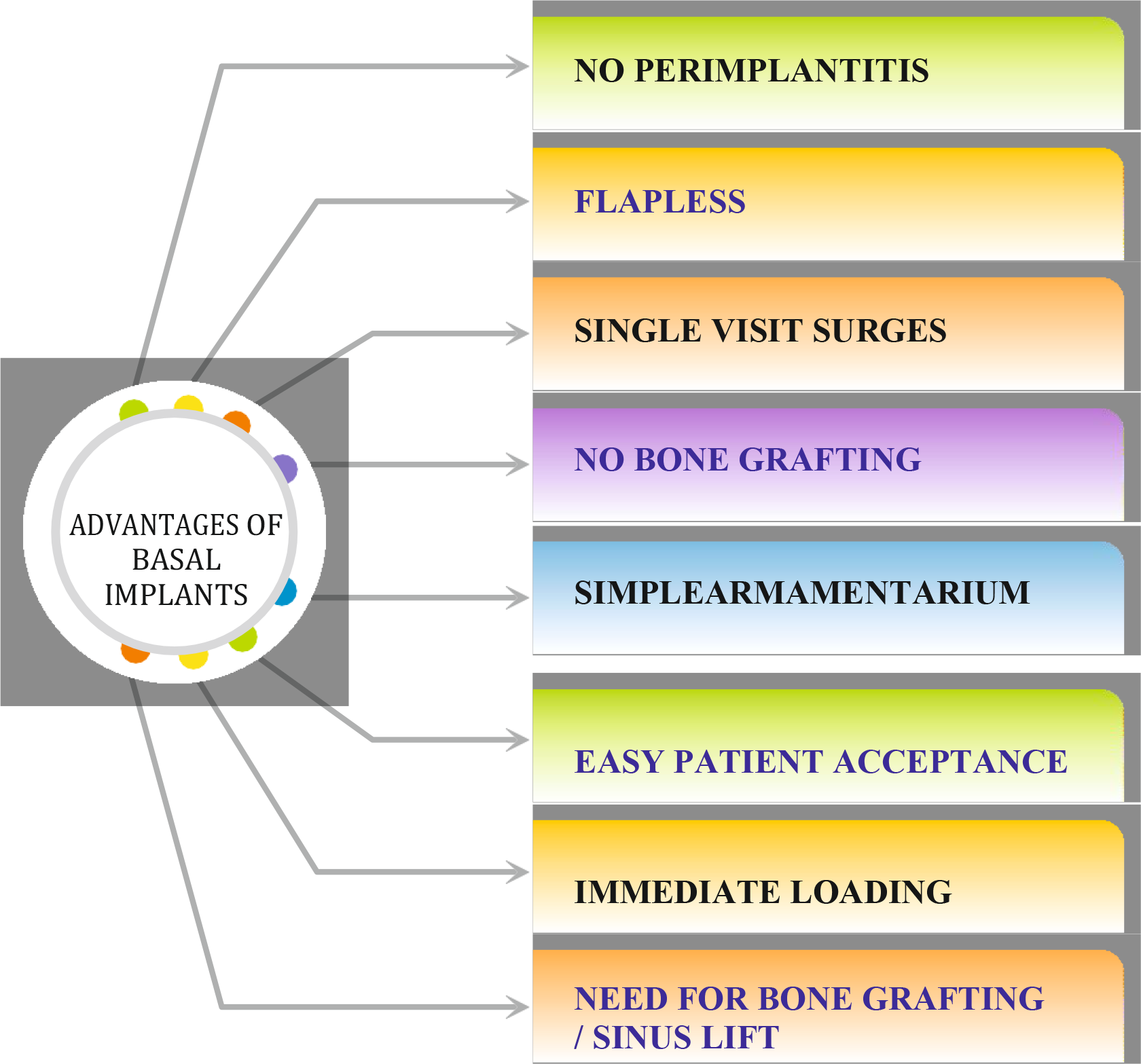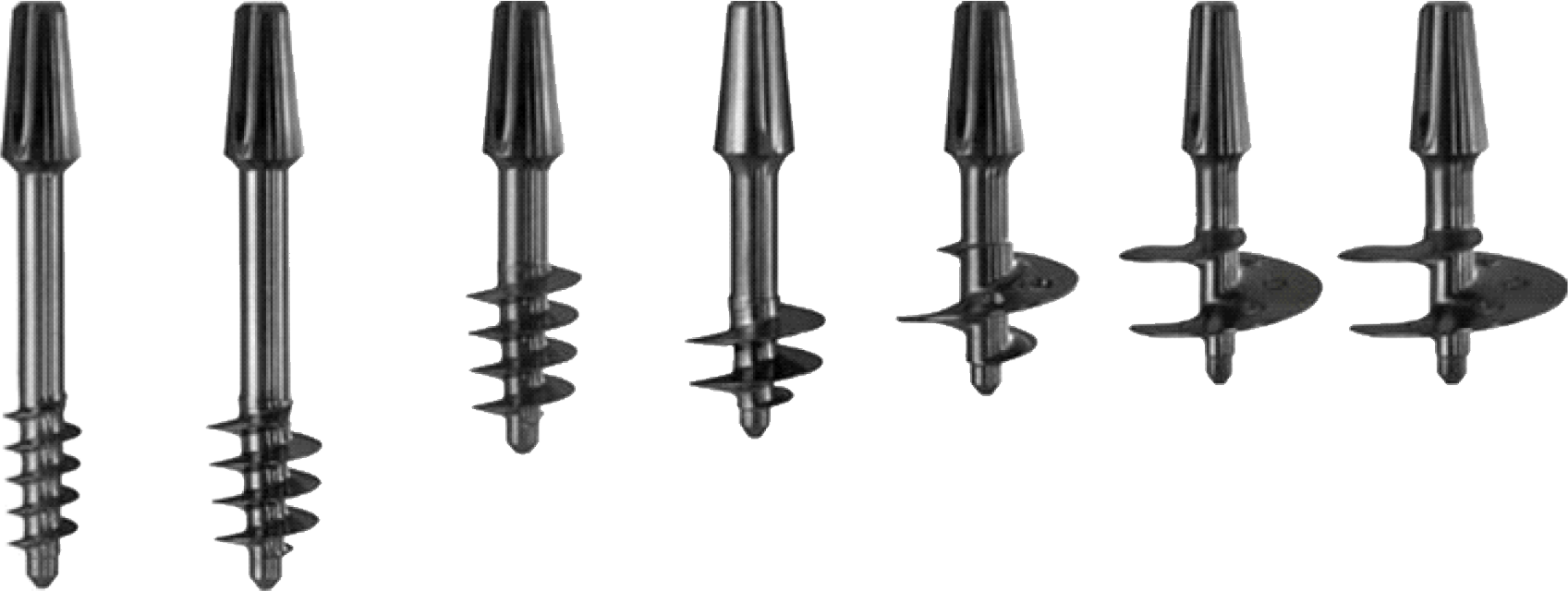













ABOUT NEED FOR BASAL IMPLANTS
Every need pushes the application of science to make things simpler, cost effective, less time consuming and easier. Today more patients want simple, non-invasive, quick solutions. Most patients who report to us with missing teeth have lost not only the tooth but also significant amount of adjacent alveolar bone. With loss of natural teeth and lack of functional stimuli atrophy of ridge setsin (Fig:1.1).

Fig. 1.1 Progression of bone loss after loss of teeth and aging.

Fig 1.2 Progression of external soft tissue collapse.
In cases of advanced atrophy, the hard and soft tissue lossis not restricted intraorally but there is also externalsoft tissue collapse which may be further compounded due to aging (Fig 1.2). Basal implantology requires a huge paradigm shift in the thinking of the implantologist. Over the years most conventional implantology companies have taught us prosthetic driven implantology whereas basal implantology utilises the existing bone i.e. the basal bone to place the implants (fig 1.3). Thus, basal implantology is more surgically driven. Using various protocols, the final prosthesis is then delivered in the correct functional and aesthetic position.
DIFFERENCE BETWEEN BASAL AND CONVENTIONAL IMPLANTS
1. With basal implants(BI) all cases (single tooth/segment/full arches) can be loaded immediately within three days(immediate functional loading). This is not the case with conventional implants as they are loaded after 3- 4 months of healing.
2. All BI are placed flapless. Expert operators can place them in all situations without the need for stents. Flapless placement with conventional implants is limited to cases where abundant bone volume is present for implant placement. The use of surgical stent is mandatory for flapless placement of conventional implants. Fabrication of stents for conventional implants need dual scans(more radiation) and further investment of time, money and effort.
3. With the use of smooth surface basal implants the problem of periimplantitis simply does not exist. Periimplantitisis an issue restricted to rough surface implants.
4. The techniques in basal implants require 10-12 implants in upper arch and 8-10 implants in a lower arch. Even for single posterior tooth replacements 2-3 implants are placed. This leads to ideal force distribution under immediate loading situations. Placement of implants in posterior regions of maxilla and mandible during full arch replacements avoid cantilevering of prosthesis. The author finds this a better solution over techniques like ALLON 4 (practiced by conventional implantologist) which has lesser number of implants for load distribution. The placement of just four implants in anterior zone leads to cantilevered design of prosthesis.
5. The unique one-piece mono block design of basal implants avoids problems
associated with screw loosening which is very common with conventional implants.
6. Working on resorbed ridges is less challenging with basal implants. The techniques allow flapless immediate loading even in the most resorbed jaws without need of bone grafting surgeries.
7. One single compact surgical kit is enough for all basal implants surgeries as opposed to conventional implants, which need multiple kits for various procedures (e.g. kit for implant placements, kit for sinus lift, kit for ridge split etc.)
ADVANTAGES OF BASAL IMPLANTOLOGY

Fig 1.6: Advantages for both operator and patient.
MOVE TO MODERN ERA BASAL INPLANTS
THE PARADIGM SHIFT
The biggest paradigm shift came roughly around 2010 when Prof Ihde introduced the single piece basal implants with crestal approach. Apart from modifying the implant, the surgical technique is also made user and patient friendly with flapless techniques. Prof Ihde is rightly regarded as the father of modern basal implantology.

Fig 2.8: Current generation single piece crestal BI of Prof Ihde.



